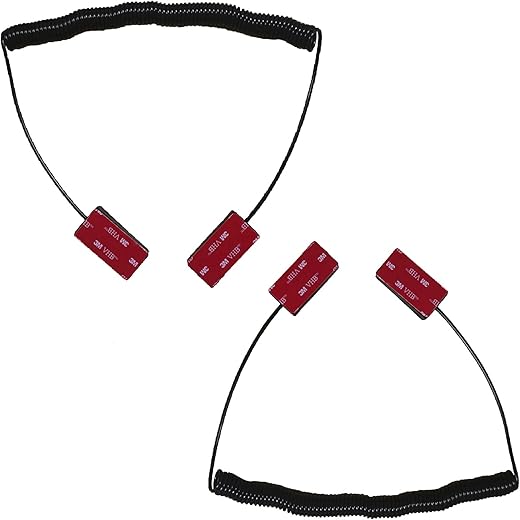









Understanding Security Controllers: Your Key to a Safer Digital Environment
In an age where cyber threats lurk behind every digital corner, the need for robust security measures has never been more critical. Enter the security controller—a pivotal element in the realm of network security. But what exactly is a security controller, and why should you care? Let’s unravel this concept and explore how it can safeguard your digital assets.
What is a Security Controller?
At its core, a security controller is a centralized system designed to manage and enforce security policies across a network. Think of it as the gatekeeper of your digital fortress, controlling who gets in and who stays out. This device helps monitor, manage, and secure user access while also keeping an eye on the overall health of your network.
Security controllers come in various forms, including hardware appliances, software applications, or even cloud-based services. Regardless of their format, their primary goal remains the same: to protect your sensitive information from unauthorized access and cyber threats.
Why Do You Need a Security Controller?
Imagine living in a house without locks. Sounds daunting, right? Similarly, a network without a security controller is an open invitation for cybercriminals. Here are a few compelling reasons why integrating a security controller into your network is imperative:
1. Enhanced Security
A security controller provides a multi-layered approach to security. It employs various techniques like authentication, data encryption, and intrusion detection to shield your network from potential threats. This layered security model is akin to having multiple locks on your door—each layer adds an extra level of protection.
2. Centralized Management
Managing security across multiple devices and platforms can be overwhelming. A security controller simplifies this process by centralizing control. You can enforce and modify security policies from a single interface, making management efficient and less error-prone. This centralization is much like having a single remote control for all your electronic devices—it saves time and hassle.
3. Regulatory Compliance
If you’re running a business, adhering to regulatory standards is non-negotiable. Security controllers help in maintaining compliance with various regulations, such as GDPR or HIPAA, by ensuring that necessary security measures are in place. They serve as a safeguard, ensuring that your data practices align with legal requirements, thus avoiding hefty fines.
How Does a Security Controller Work?
Understanding how a security controller operates can demystify its function. Picture it as a conductor leading an orchestra, coordinating various elements to create a harmonious, secure environment. Here’s how it typically functions:
1. User Authentication
When a user attempts to access the network, the security controller first verifies their identity through authentication methods like passwords, biometrics, or tokens. This step ensures that only authorized personnel can enter, much like a bouncer checking IDs at a club.
2. Policy Enforcement
Once authenticated, the security controller applies predetermined security policies. These policies dictate what data users can access and what actions they can perform. Think of it as a set of house rules; everyone must follow them to maintain order and security.
3. Continuous Monitoring
Security controllers continuously monitor network traffic for any suspicious activity. If any anomalies are detected—such as unauthorized access attempts or unusual data transfers—the controller can trigger alerts or take automated actions to mitigate potential threats. This vigilance is reminiscent of a security camera watching over your home, ensuring everything remains secure.
Choosing the Right Security Controller
With numerous options available, selecting the right security controller can feel overwhelming. Here are a few factors to consider:
1. Scalability
As your organization grows, so too will your security needs. Opt for a security controller that can scale with your operations, ensuring it remains effective as your network expands.
2. Integration
Your security controller should seamlessly integrate with existing systems and devices within your network. Compatibility is crucial for maintaining a cohesive security strategy.
3. Vendor Reputation
Research the vendors you’re considering. Look for reviews, case studies, and testimonials to ensure that you’re choosing a reputable provider with a history of delivering reliable security solutions.
Conclusion
In a world where digital threats are ever-evolving, investing in a security controller is not just wise—it’s essential. This powerful tool acts as your network’s guardian, ensuring that your data remains safe and your operations run smoothly. By understanding its functions and benefits, you can make informed decisions to fortify your digital defenses. Remember, a proactive approach to security today can save you from significant headaches tomorrow.
FAQs
1. What is the difference between a hardware and software security controller?
A hardware security controller is a dedicated physical device designed to manage network security. In contrast, a software security controller is an application that can be installed on existing hardware. Both serve the same purpose but differ in implementation.
2. Can a security controller protect against all cyber threats?
While a security controller significantly enhances your network security, it cannot guarantee complete protection against all threats. It should be part of a broader security strategy that includes firewalls, antivirus software, and user education.
3. How often should I update my security controller?
Regular updates are crucial for maintaining the effectiveness of your security controller. Aim to check for updates at least quarterly, or immediately after a major security incident or vulnerability is disclosed.
